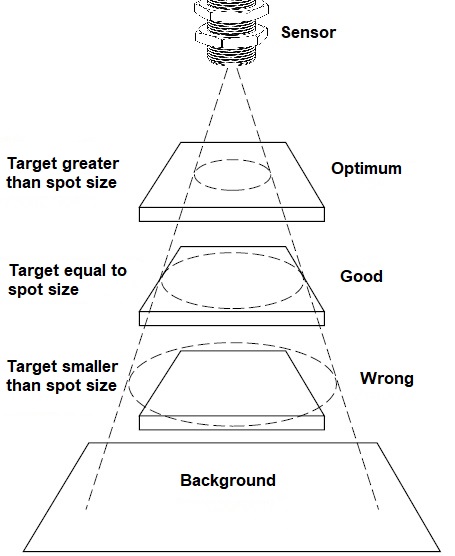The sensor optics of a pyrometer, infrared temperature sensor and infrared thermometer is an important parameter when it comes to precise non-contact temperature measurement of a measurement object.
Infrared radiation is an invisible light in the electromagnetic spectrum that is emitted by hot surfaces. An infrared temperature pyrometer uses this radiation to measure the temperature of surfaces without direct contact.
The sensor optics of a pyrometer is an important parameter when it comes to precise non-contact temperature measurement of a measurement object.
The quality of the sensor optics has a direct influence on the accuracy of the measurement
Good sensor optics should have a high transmission efficiency (transmittance) and low stray light components to ensure that the incident infrared radiation is optimally detected.
The lens of the infrared sensor also functions as a spectral filter optic, because
the correct spectral range of the sensor optics is also very important in order to achieve high measurement accuracy, e.g. 2.3µm for non-contact temperature measurements in the metal industry and metallurgy or 8-14µm for most non-metallic surfaces.
Measurement distance and spot size
As a rule, optics with a fixed focal length are used in a pyrometer.
When selecting the right sensor optics, it is important to know the measuring distance and the size of the object to be measured. The optical parameters of the sensor optics are specified in D:S (Distance to Spot ratio), in this case the ratio of 15:1 or also in millimeters, e.g. 100/10, i.e. at a measuring distance of 100mm the measuring spot is 10mm.

Correct alignment of the pyrometer to the measurement object
A pyrometer must be selected with the correct optical resolution. When aligning the pyrometer with the measurement object, it is important that the measurement object completely fills the measurement spot of the sensor optics.
If the measurement object does not completely fill the measurement spot of the sensor optics and also detects material surfaces next to the measurement object, the non-contact measured temperature is calculated and output as an average value.

Material of the sensor optics of a pyrometer
Germanium (Ge) is most frequently used as the window material for sensor optics, as this material has a very high transmittance in the wavelength range from
2µm to 16µm (with anti-reflective coating). However, materials such as silicon (Si) or zinc sulphide (ZnS) are also used.
Overall, the sensor optics are an important factor when choosing the right infrared pyrometer for a particular application. Care must be taken to ensure that the optical parameters of the pyrometer are precisely matched to the needs and requirements of the application in order to ensure accurate and reliable measurement and achieve optimum temperature measurement results.




















